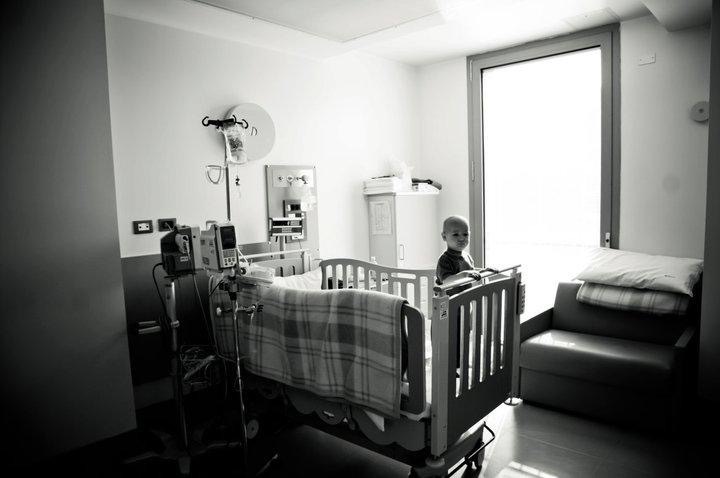There is a new most expensive drug in the world. Price tag: $4.25 million
There is a new most expensive drug ever-a gene therapy that costs as much as a Brooklyn brownstone or a Miami mansion, and more than the average person will earn in a lifetime.
Lenmeldy is a gene treatment for metachromatic leukodystrophy (MLD) and was approved in the U.S. on Monday. Its maker, Orchard Therapeutics, said today the $4.25 million wholesale cost reflects the value the treatment has for patients and families.
No doubt, MLD is awful. The nerve disorder strikes toddlers, quickly robbing them of their ability to speak and walk. Around half die, the others live on in a vegetative state causing crushing burdens for families.
But it's also incredibly rare, affecting only around 40 kids a year in the U.S. The extreme rarity of such diseases is what's behind the soaring price-tags of new gene therapies. Just consider the economics: Orchard employs 160 people, much more than the number of kids they'll be able to treat over several years.
 A child in isolation after gene therapy for metachromatic leukodystrophyAMY PRICE
A child in isolation after gene therapy for metachromatic leukodystrophyAMY PRICEIt means even at this price, selling the newest DNA treatment could be a shaky business. Gene therapies have struggled commercially-and I wouldn't expect Lenmeldy to buck that trend," says Maxx Chatsko, founder of Solt DB, which gathers data about biotech products..
Call it the curse of being the world's most expensive drug.
The MLD therapy was approved in Europe starting three years ago, where its price is somewhat lower, but Chatsko notes that Orchard generated only $12.7 million from product sales during most of last year. It means you can count the number of kids who got it on your hands.
There's no doubt the treatment is a lifesaver. The gene therapy adds a missing gene to the bone marrow cells of children, reversing the condition's root cause in the brain. Many of the kids who got it, in trials that began in 2010, have been growing up to be beautifully average.
My heart wants to talk about what an effect this therapy has had in these children," says Orchard's chief medical officer, Leslie Meltzer. Without it, they will die very young or live for many years in a vegetative state." But kids who get the gene therapy, mostly end up being able to walk and do well cognitively The ones we treat are going to school, they're playing sports, and are able to tell their stories," Meltzer says.
Independent groups also think the drug could be cost-effective. One, called the Institute for Clinical and Economic review, and which assesses the value of drugs, said last September that the MLD gene therapywas worth it at a cost between $2.3 and $3.9 million, according to their models.
But there's no denying that super-high prices can signal that a treatment isn't economically sustainable.
One prior title holder for most expensive drug, the gene therapy Glybera, was purchased only once before being retired from the market. It didn't work well enough to justify the $1 million price tag, which made it the price champion at the time.
Then there's the treatment that's been reigning as the costliest until today, when Lenmeldy took over. It's a $3.5 million hemophilia treatment called Hemegenix, which is also a gene therapy. Such treatments were meant to be generate billions in sales, yet they aren't getting nearly the uptake you'd expect according to news reports.
Orchard itself gave up on another DNA fix, Strimvelis, which was an out-and-out cure for a type of immune deficiency. It owned the gene therapy and even got it approved in Europe. The issue was both too few patients and the existence of an alternative treatment. Not even a money back guarantee could save Strimvelis, which Orchard discontinued in 2022.
Orchard was subsequently bought by Japanese drug company Kyowa Kirin, of which it's now a subsidiary.
So it can seem like even though gene-therapies are hitting home runs in trials, they're losing the ballgame. In the case of this Lenmeldy, the critical issue will be early testing for the disease. That's because once children display symptoms, it can be too late. For now, many patients are being discovered only because an older sibling has already succumbed to the inherited condition.
In 2016, MIT Technology Review recounted the dramatic effects of the MLD gene therapy, but also the heartbreak for parents as one child would die in order to save another.
Orchard says it hopes to solve this problem by getting on the list of diseases automatically tested for at birth, something that could secure their market, and save many more children. A decision on testing, advocates say, could be reached following a May meeting of the U.S. government committee on newborn screening.
Among those cheering for the treatment is Amy Price, a rare disease advocate who runs her own consultancy, Rarralel, in Denver. Price had three children with MLD-one who died, but two who were saved by the MLD gene therapy, which they received starting in 2011, when it was in testing.
Price says her two treated kids, now in their tweens and teens, are totally ordinary, absolutely average." And that is worth the price, she says. The economic burden of an untreated child....exceeds any gene therapy prices so far," she says. That reality is hard to understand when people want to react to the price alone."